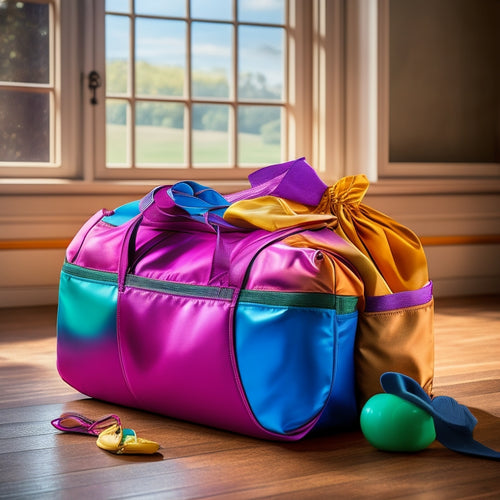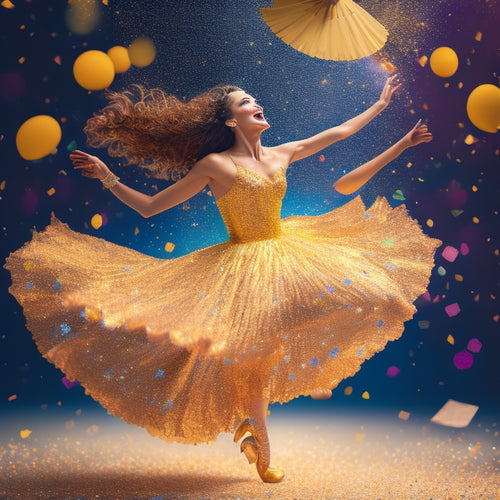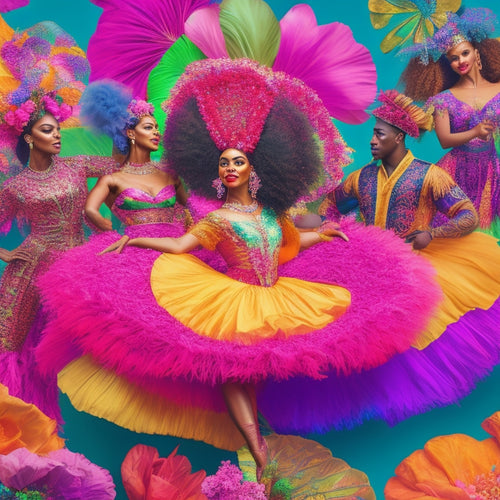
Pop Music Videos: Elements, Cinematography, and More
Share
Pop music videos are a masterclass in visual storytelling, combining cinematography, mise en scene, and intertextuality to evoke emotions and convey the artist's message. Symbolic props, clever shot compositions, and deliberate pacing work together to create a fantastical yet relatable world. Skilled cinematographers employ dynamic camera movements, strategic lighting, and innovative shot changes to heighten emotional intensity. Every design decision, from costume choices to location selection, is made to reinforce the artist's identity and narrative. As each element comes together, a rich tapestry of visual storytelling unfolds, inviting viewers to step into the artist's vivid world and explore its many intricacies.
Key Takeaways
• Pop music videos combine cinematography, mise en scene, and intertextuality to create a unique visual identity that amplifies emotional expressions.
• Skilled cinematographers employ dynamic camera movements, clever shot compositions, and deliberate pacing to enhance emotional intensity in pop music videos.
• Mise en scene design involves deliberate choices in costume, lighting, and setting to reinforce the artist's message and immerse viewers in the narrative.
• Intertextual influences from film, art, and literature enrich the visual storytelling in pop music videos, adding depth and complexity to the narrative.
• Strategic use of settings and locations in pop music videos serves as a visual canvas, amplifying the narrative and reflecting the artist's persona.
Visual Storytelling Elements
In the world of pop music videos, visual storytelling elements seamlessly weave together cinematography, mise en scene, and intertextuality to craft an engaging narrative that complements the song's lyrics and tone.
Emotional expressions are amplified through the strategic use of symbolic props, which add depth and meaning to the narrative. For instance, a broken mirror may symbolize a shattered heart, while a blooming flower could represent growth and renewal.
These visual elements work in harmony to convey the artist's message, evoking emotions and creating a lasting impression on the viewer. By carefully balancing these elements, pop music videos become a masterclass in visual storytelling, drawing the audience into a world that is both fantastical and relatable.
Cinematography Techniques Used
Through the lens of a skilled cinematographer, pop music videos come alive with dynamic camera movements, clever shot compositions, and deliberate pacing, all working in tandem to amplify the emotional intensity of the performance. The cinematographer's expertise is essential in capturing the artist's vision, as they employ a range of techniques to create a visually stunning narrative.
Notably, three key techniques are commonly used:
-
Experimentation with camera angles: From low-angle shots that evoke power and dominance to high-angle shots that convey vulnerability, the cinematographer's choice of angle greatly impacts the viewer's emotional response.
-
Strategic use of lighting effects: Lighting is used to set the tone, create mood, and draw attention to specific elements within the frame. Soft, warm lighting can establish an intimate atmosphere, while harsh, high-contrast lighting can enhance the energy of the performance.
-
Innovative shot changes: Seamless transitions between shots can create a sense of continuity, while sudden cuts can add a sense of urgency or surprise, keeping the viewer engaged and invested in the narrative.
Mise En Scene Design
Five essential elements of mise en scene design in pop music videos come together to create a visually striking narrative, where every detail - from costumes to lighting - is carefully crafted to reinforce the artist's message and aesthetic.
Costume choices, for instance, range from casual wear to high-end designer labels, often matching the vibrant colors of the scenery. Lighting effects are also vital, with bright, high-key lighting evoking summer vibes and low-key lighting setting a more intimate tone.
These deliberate design decisions create a cohesive visual language that complements the music and tells a story. By carefully balancing these elements, directors can craft a captivating mise en scene that immerses viewers in the world of the music video.
Intertextual Influences Explored
As pop music videos often blur the lines between reality and fantasy, they frequently draw inspiration from a diverse array of sources, combining disparate elements to create a unique visual identity. This intertextuality allows artists to pay homage to their influences while also putting their own spin on familiar themes.
Film references, such as Taylor Swift's 'Bad Blood' inspired by Quentin Tarantino's Sin City, serve as a nod to the cinematic world.
Costume inspirations, like Lady Gaga's nods to David Bowie, showcase the artist's admiration for style icons.
Symbolic imagery, such as Rihanna's use of snakes in 'Work', adds depth to the narrative, while character crossovers, like Katy Perry's cameo in Kesha's 'True Colors', create a sense of community among artists. These influences not only enrich the visual storytelling but also demonstrate the artist's creativity and cultural awareness.
Settings and Locations Chosen
In the world of pop music videos, settings and locations serve as a visual canvas, carefully curated to amplify the narrative, evoke emotions, and reflect the artist's persona.
Iconic landmarks like the Eiffel Tower or Times Square are often chosen for their instantly recognizable appeal, while personal spaces like bedrooms or backyards provide an intimate, relatable atmosphere.
These deliberate choices not only enhance the video's aesthetic but also convey the artist's message and style. By selecting specific locations, artists can tap into the audience's emotional connection, creating a sense of familiarity or escapism.
The strategic use of settings and locations transforms the music video into an engaging, immersive experience.
Frequently Asked Questions
How Do Pop Music Videos Balance Between Showcasing the Artist and the Song?
Amidst kaleidoscopic visuals, pop music videos strike a delicate balance between showcasing the artist and the song by masterfully weaving artist representation through visual storytelling, while subtly integrating brand presence, all in harmony with the artist's unique artistic vision.
What Role Does Social Media Play in Promoting Pop Music Videos?
Social media plays a pivotal role in promoting pop music videos through influencer partnerships, which amplify reach and credibility, and viral challenges, which encourage engagement and user-generated content, thereby increasing a video's online presence and cultural relevance.
Can Music Video Directors Influence an Artist's Brand Identity?
"A visionary music video director can single-handedly catapult an artist's brand identity into the stratosphere, masterfully weaving visual storytelling and imagery to craft an unmistakable aesthetic, thereby forever etching their artistic direction into the fabric of pop culture."
How Do Music Videos Impact Album Sales and Chart Performance?
Music videos greatly impact album sales and chart performance by leveraging visual storytelling to foster consumer engagement, serving as an essential component of digital marketing and promotional strategies that amplify an artist's brand and drive commercial success.
Are There Any Cultural or Regional Differences in Pop Music Video Styles?
Cultural and regional differences in pop music video styles emerge through global influences, visual storytelling, and artistic interpretations, with fashion trends often reflecting local tastes, resulting in unique visual identities that cater to diverse audiences worldwide.
Related Posts
-

Dancewear Bags to Keep You Organized and Stylish
When it comes to dancewear bags, you want something that's both functional and stylish. Look for durable materials li...
-

Color Your World: Dance Pages Galore
Color Your World: Dance Pages Galore is a wide-ranging platform offering a diverse range of dance-inspired coloring p...
-

Dance Dress Code: Unleash Your Style
A dance dress code that prioritizes functionality and technical precision can often stifle dancers' ability to expres...


